<< Previous | Displaying results 5401-5425 of 6769 for "" | Next >>
On September 29-30, 1941, SS and German police units and their auxiliaries, under guidance of members of Einsatzgruppe C, murdered the Jewish population of Kiev at Babi Yar, a ravine northwest of the city. This photograph shows groups of Jews being forced to hand over their possessions and undress before being shot in the ravine.
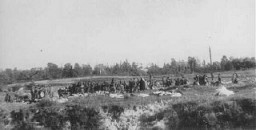
Close-up studio portrait of a young Jewish girl named Anna Glinberg, who was later killed during the mass execution at Babi Yar.
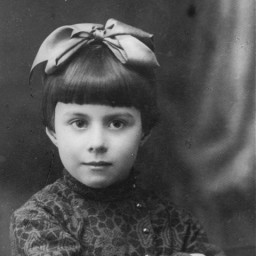
1936 portrait of two-year-old Mania Halef, a Jewish child, who was later killed during the mass execution at Babi Yar.
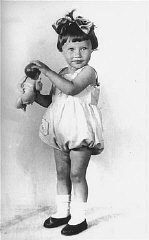
Portrait of five-year-old Mania Halef, a Jewish child, who was later killed during the mass execution at Babi Yar.
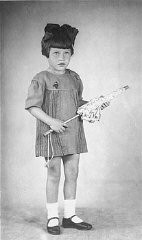
On September 15, 1947, defendant Paul Blobel pleads not guilty during his arraignment at the Einsatzgruppen Trial. Blobel was the commander of the unit responsible for the massacre at Babi Yar (near Kiev). He was convicted by the military tribunal at Nuremberg and sentenced to death. Blobel was hanged at the Landsberg prison on June 8, 1951.
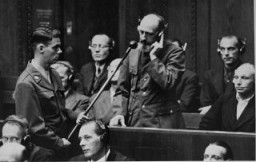
Defendant Paul Blobel at the Einsatzgruppen Trial, case #9 of the Subsequent Nuremberg Proceedings.
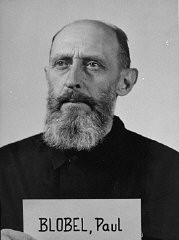
Some 7,000 Jewish men ordered to register for forced labor assemble in Liberty Square in German-occupied Salonika. Salonika, Greece, July 1942.
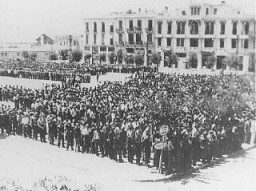
View of the destroyed Jewish cemetery in German-occupied Salonika. The tombstones would be used as building materials. Salonika, Greece, after December 6, 1942.
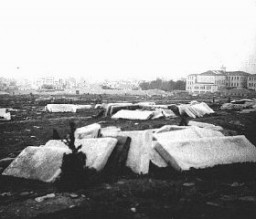
A Greek Jewish couple with compulsory yellow stars on their clothing. Salonika, Greece, between February and June 1943.
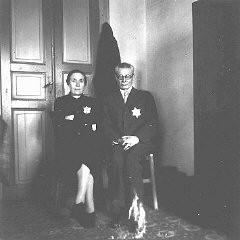
Entrance to the Breendonk internment camp. Breendonk, Belgium, 1940-1944.
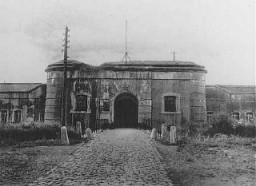
A postwar photograph of the Breendonk internment camp in Belgium. In August 1940, the Germans, who had occupied Belgium in May of that year, turned the fortress into a detention camp.
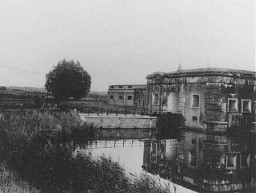
After the war, thousands of Jewish children ended up in orphanages all over Europe as a result of the Holocaust. The toddlers in this children's home in Etterbeek, Belgium, survived in hiding, but their parents had been deported to Auschwitz.
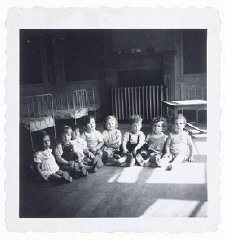
Parting from one's child was a difficult experience for parents who placed their offspring with foster families. Eda Künstler entrusted this photograph of herself to her daughter's rescuer, Zofji Sendler. On the back it is inscribed, "Anita's real mother."

A young girl in a home for Jewish infants waiting for their families to claim them or be adopted. Etterbeek, Belgium, after 1945.
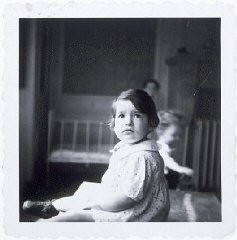
Denunciations of Jews to German authorities came from a variety of different sources, sometimes even from their "protectors." In 1944, Eva and Liane Münzer (pictured here) were reported to the police as a result of a domestic fight between their rescuers. The irate husband denounced his wife and the two Jewish girls. The Münzer sisters were sent to Auschwitz and killed.
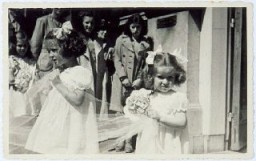
Eva, Alfred, and Leane Munzer. Infant Alfred survived in hiding; his sisters were discovered and killed in Auschwitz.
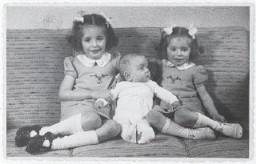
A view of one of the watchtowers and part of the perimeter fence at Ohrdruf, part of the Buchenwald camp system, seen here after US forces liberated the camp. Ohrdruf, Germany, April 1945.
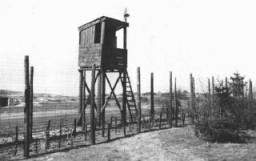
View of a watchtower and prisoner barracks at the Ohrdruf subcamp of the Buchenwald concentration camp, soon after US forces liberated Ohrdruf. Ohrdruf, Germany, April 1945.
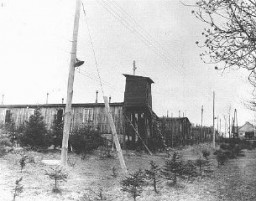
Interior view of prisoners' barracks at the Ohrdruf subcamp of the Buchenwald concentration camp. This photograph was taken after liberation. Ohrdruf, Germany, April 13, 1945.

A view of the double row of barbed-wire fences that surrounded the Ohrdruf camp, a subcamp in the Buchenwald camp system. Ohrdruf, Germany, April 1945.
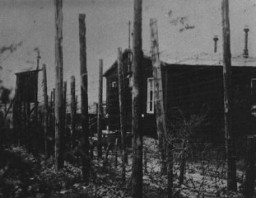
US soldiers of the 4th Armored Division survey the dead at Ohrdruf, a subcamp of the Buchenwald concentration camp. Germany, April 1945.
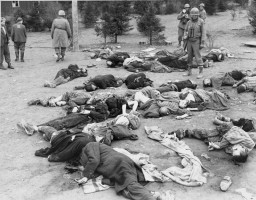
General Dwight D. Eisenhower (center), Supreme Allied Commander, views the corpses of inmates who died at the Ohrdruf camp. Ohrdruf, Germany, April 12, 1945.
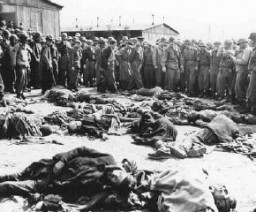
General Dwight D. Eisenhower (center, right) views the corpses of victims of the Ohrdruf camp. Germany, April 12, 1945.
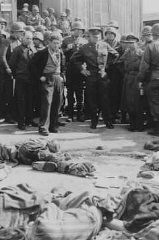
While on an inspection tour of the newly liberated Ohrdruf concentration camp, American soldiers view the charred remains of prisoners burned upon a section of railroad track during the evacuation of the camp. Ohrdruf, Germany, April 4-15, 1945.
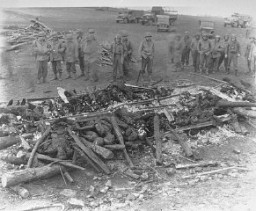
A survivor shows US Generals Eisenhower, Patton, and Bradley how inmates at the Ohrdruf camp were tortured. Ohrdruf, Germany, April 1945.
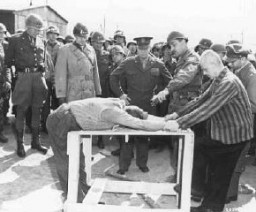
We would like to thank Crown Family Philanthropies, Abe and Ida Cooper Foundation, the Claims Conference, EVZ, and BMF for supporting the ongoing work to create content and resources for the Holocaust Encyclopedia. View the list of donor acknowledgement.